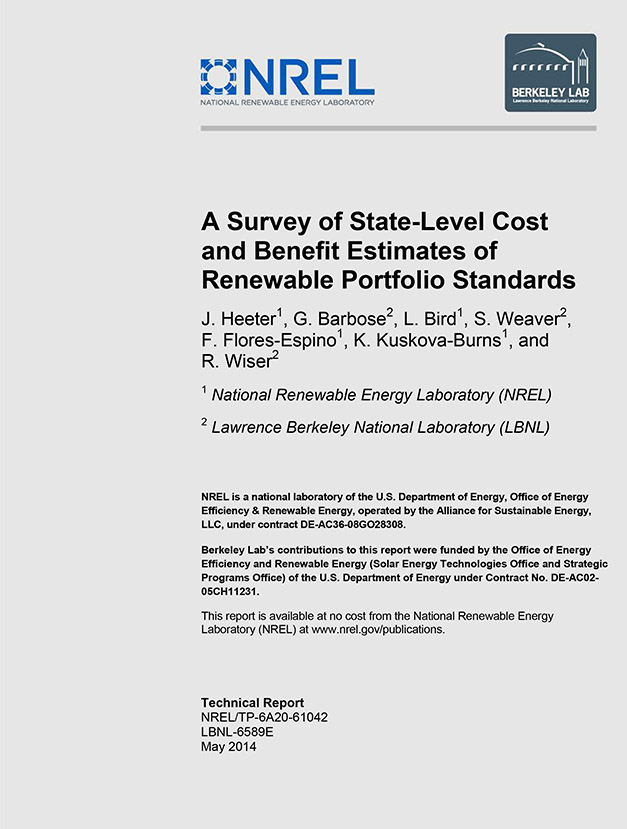Renewable Portfolio Standards: Understanding Costs and Benefits
State policymakers, public utilities commissions, and the renewable industry rely on NREL's analysis of renewable portfolio standards (RPS) to understand costs, benefits, and impacts of current and potential standards or changes to standards.
NREL and Lawrence Berkeley National Laboratory undertook a multiyear project to examine the costs, benefits, and other impacts of state RPS polices both retrospectively and prospectively.

Understanding the Costs, Benefits, and Impacts of U.S. Portfolio Standards
Relying on a well-vetted set of methods, the study evaluates the costs, benefits, and other impacts of renewable energy used to meet future RPS demand growth over the 2015-2050 period. The study considers both the current set of state RPS policies, as well as a high renewable energy scenario in which most states adopt relatively aggressive targets. Those two scenarios are compared to a No RPS scenario, which assumes no further growth in RPS requirements beyond 2015. When comparing the costs and monetized benefits, we find that the benefits exceed the costs, even when considering the highest cost and lowest benefit outcomes.
More Information: Fact Sheet

Understanding of the Benefits and Impacts of RPS Programs
More information: Press Release | Fact Sheet

State-Level Cost Estimates of RPS Programs
Based on an analysis of data from state compliance filings and other sources, a joint NREL and Lawrence Berkeley National Laboratory report finds that the estimated incremental RPS cost over a period from 2010–2012—the cost above and beyond what would have been incurred absent the RPS—was less than 1% of retail electricity rates on average.
More information: Full Report | Presentation
Other RPS Work
International Best Practices for Implementing and Designing Renewable Portfolio Standard (RPS) Policies, NREL Technical Report (2019)
Beyond Renewable Portfolio Standards: An Assessment of Regional Supply and Demand Conditions Affecting the Future of Renewable Energy in the West , NREL Technical Report (2013)
Quantifying the Level of Cross-state Renewable Energy Transactions in 2012 and 2013
Presentation | REC Data Viewer | Power Flow Data
Including Alternative Resources in State Renewable Portfolio Standards: Current Design and Implementation Experience, NREL Technical Report (2012)
Evaluating Renewable Portfolio Standards and Carbon Cap Scenarios in the U.S. Electric Sector, NREL Technical Report (2010)
Status and Trends in U.S. Compliance and Voluntary Renewable Energy Certificate Markets (2010 Data), NREL Technical Report (2011)
Examination of the Regional Supply and Demand Balance for Renewable Electricity in the United States Through 2015: Projecting from 2009 Through 2015 (Revised), NREL Technical Report (2010)
State Clean Energy Practices: Renewable Portfolio Standards, NREL Technical Report (2008)
Contact
Share
Last Updated April 21, 2025

